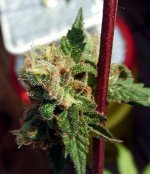G
guest456mpy
Hi alkalien,
Wow 1st Hydro and 1st LED at once, you are brave indeed!
I did the very same thing when I switched, btw. that's how I know.
Ran into the same Mg def in veg, K in veg and flowering. I now have separate Cal and MG solutions so I can balance the nutrients without adding extra N that's in CalMag. I'm hoping a more detailed discussion of nutrients will follow our treatment of lighting per se. I think we are wrapping up light quantities and strengths and ready to move on to qualities, but who knows what direction this thread may take.
Thanks for your input!
H.G.
Wow 1st Hydro and 1st LED at once, you are brave indeed!
I did the very same thing when I switched, btw. that's how I know.
Ran into the same Mg def in veg, K in veg and flowering. I now have separate Cal and MG solutions so I can balance the nutrients without adding extra N that's in CalMag. I'm hoping a more detailed discussion of nutrients will follow our treatment of lighting per se. I think we are wrapping up light quantities and strengths and ready to move on to qualities, but who knows what direction this thread may take.
Thanks for your input!
H.G.

 For me, as far as "rules" are clearly stated to be general guidelines, its good.
For me, as far as "rules" are clearly stated to be general guidelines, its good.
 ).
).

